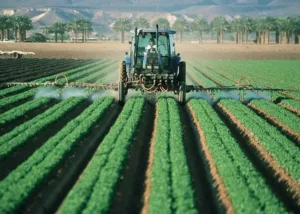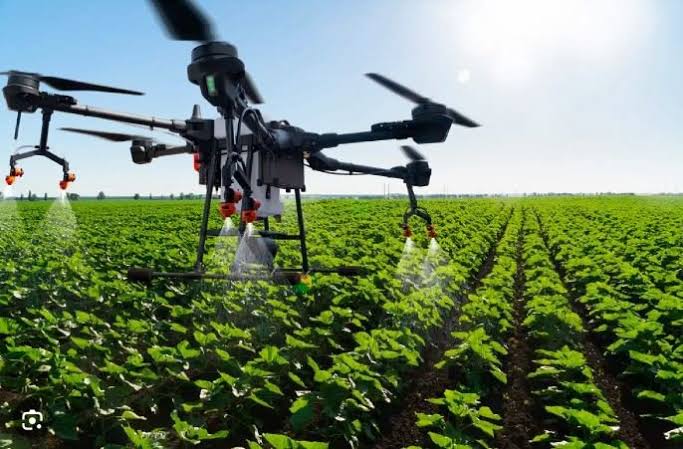When you purchase through links on our site, we may earn an affiliate commission. This doesn’t affect our editorial independence.
As the oldest profession, farming has advanced significantly from the days of using hand tools to the use of contemporary, technical machinery. Smart farming has drastically changed agriculture, from manually examining the fields to studying the crops with remote sensors.
Agriculture in today’s world faces several difficulties, including a shortage of workers, rising costs, and shifting customer preferences. Consumers today want transparency and sustainability in everything, particularly in food products. Thus, using smart farming becomes even more important.
The most urgent problem facing the world has been the production and availability of food. The population rise over the past 35 years has led to a renewed demand for food supplies. Agri-tech firms are striving to address contemporary challenges in farming by offering AI-focused farming solutions, such as automation, biotechnology, smart irrigation, and precision agriculture.
Technology and innovation will drive farming in the future. More advancements in productivity, sustainability, and efficiency will be made in agriculture as these cutting-edge farming instruments and technology develop.
Let’s now examine a few agricultural technology innovations that are revolutionizing the agricultural industry:
1. Sensors, Including Remote Sensors
It is also difficult to keep track of every square inch of the field. However, farmers can keep an eye on every area of the field if they employ remote sensors. These sensors use wireless technology to transfer data. These sensors aid in the development of smart watering systems by gathering information on soil moisture and mineral levels. With the aid of these sensors, you can more effectively plan when to water, weed or harvest the crops.
Aerial photographs of fields can be taken by drones fitted with multispectral sensors and high-resolution cameras. These photos lessen the need for broad-spectrum treatments and enable customized interventions. They can provide vital information on key parameters like soil conditions, weed infestations, and crop health. Some of these sensors include plant health monitors and soil moisture sensors.
Together they help maximize crop yields and minimize resource waste by helping farmers optimize irrigation, pest management and soil fertility.
2. Weather Monitoring Technology
Climate conditions directly impact crop development. Diseases, pest infestations, and crop failure can all result from small weather variations. Some wealthy nations favor indoor farming to safeguard their crops, but most underdeveloped nations lack the financial resources to make such investments. In these circumstances, farmers might use weather monitoring devices to help them plan their farming operations. Farmers may examine variations in soil moisture, temperature, humidity, wind direction and speed, and rainfall data using these advanced weather monitoring tools.
3. GIS Technology
This technology enables a smart farmer to create layered interactive maps that aid in the organization and visualization of complex field data. This contemporary technology aids smart farmers to keep an eye on their crops without having to be physically present.
GIS technology makes agricultural automation an easy endeavor by using robots, drones, and satellite monitoring. The use of GIS technology, also known as ‘Precision farming’ helps farmers to make the greatest use of their resources and maximize crop yields. It captures and analyzes a broad range of data about the farmland.
4. Artificial Intelligence (AI)
AI-powered automation is a technology that is being applied in practically every field, including agriculture. It can give real-time information on crop growth, harvesting, processing, and marketing, Additionally, it can assist in identifying and diagnosing crop diseases that occur during various seasons. Farmers using equipment like driverless tractors, smart irrigation systems, smart fertilization techniques, and smart spraying systems won’t be impacted by the shortage of workers.
Some notable AI-powered farming equipment include:
- Self-Driving Tractors: Self-driving tractors travel fields and precisely carry out operations like planting and tilling by using GPS, sensors, and artificial intelligence. They increase efficiency and lower personnel expenses by operating around the clock.
- Precision sprayers: These devices use sensors and GPS technology to apply fertilizer and insecticides just where necessary, limiting their negative effects on the environment and consuming fewer chemicals.
- Autonomous harvesters: They effectively gather crops with little loss, enhancing the quality of the final output. Harvesting fragile crops like fruits and vegetables is one of their special advantages.
- Robotic weeders: These devices locate and eradicate weeds without the use of toxic pesticides by using AI and computer vision, thereby reducing their negative effects on the environment and fostering sustainable farming.

Credit: Computerworld
5. Cloud Computing
Cloud Computing is used in agriculture to integrate all of the smart technologies into one unit. It is crucial to smart farming since it facilitates the integration of data from distant sensors. It aids in crop quality assurance, weather forecasting, and production output management for farmers.
Various algorithms can forecast the effects of certain operations, such as the application of pesticides or herbicides, on crop growth. Farmers will receive a thorough analysis and recommendations based on real-time data regarding water requirements, climatic change, fertilizer requirements, etc. This will help reduce waste through precise planning and resource utilization, aiding sustainable agriculture.
These five smart farming innovations are revolutionizing contemporary farming. Big tech companies are still striving to bring more cutting-edge technologies to the agricultural sector.
Farmers can ensure future generations have access to a more plentiful and sustainable food supply by adopting these innovations. Agric technologies employ a range of instruments and technology to enhance the agriculture sector.
Enhancing farming’s sustainability, efficiency, and productivity is the aim of these modern agricultural technologies. By using sensors, robots, and computers, these technologies help farmers make better choices.
Check Out Our Previous Post:








